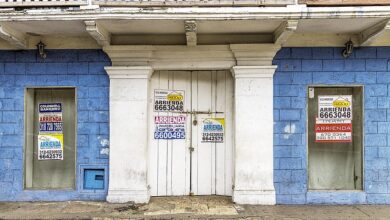Understanding Replacement Cost vs. Actual Cash Value in Luxembourg

Introduction
When purchasing insurance policies—whether for your home, car, or personal belongings—one of the most critical decisions you’ll face is choosing between Replacement Cost and Actual Cash Value (ACV) coverage. These valuation methods determine how much your insurer will pay out if your property is damaged, destroyed, or stolen. Understanding the difference between these two options is essential to ensure you have adequate coverage that aligns with your needs and budget. This article breaks down the distinctions between Replacement Cost and ACV, their implications in Luxembourg’s insurance market, and how to decide which option is right for you.
What is Replacement Cost?
Replacement Cost refers to the amount it would take to repair or replace damaged or lost property with materials of similar kind and quality, without deducting for depreciation . In other words, if your insured item is destroyed, the insurer will pay what it costs to rebuild or buy a new one at today’s prices.
Example:
If a fire damages your roof, and the cost to replace it with similar materials is €10,000, your insurer will pay up to that amount (minus your deductible) under a replacement cost policy. The age or condition of the roof doesn’t factor into the payout.
Key Features of Replacement Cost Coverage:
- Pays for repairs or replacements based on current market prices.
- Does not account for depreciation.
- Typically results in higher payouts but also comes with higher premiums.
- Often requires additional documentation, such as receipts or estimates, to verify costs.
What is Actual Cash Value (ACV)?
Actual Cash Value (ACV) compensates you for the value of your property at the time of loss, accounting for depreciation . Depreciation reflects the reduction in an item’s value due to age, wear and tear, or obsolescence. As a result, ACV payouts are generally lower than replacement cost payouts.
Example:
If your 10-year-old refrigerator is destroyed in a fire and a new one costs €1,500, the insurer might calculate its ACV by subtracting depreciation. If the fridge has depreciated by €800, you’d receive only €700 (minus your deductible).
Key Features of ACV Coverage:
- Pays less because it factors in depreciation.
- Results in lower premiums compared to replacement cost policies.
- May leave you responsible for covering the difference between the payout and the cost of replacing the item.
- Commonly used for older homes or items nearing the end of their lifespan.
Key Differences Between Replacement Cost and ACV
| Factor | Replacement Cost | Actual Cash Value (ACV) |
|---|---|---|
| Depreciation | Not considered | Deducted from the payout |
| Payout Amount | Higher, based on current replacement costs | Lower, based on depreciated value |
| Premium Costs | Higher | Lower |
| Best For | Newer homes and high-value possessions | Older homes or budget-conscious homeowners |
Implications in Luxembourg’s Insurance Market
Luxembourg’s insurance market offers both Replacement Cost and ACV options, particularly for homeowners, renters, and auto insurance. Here’s how these valuation methods apply in specific contexts:
1. Homeowners Insurance
- Replacement Cost : Ideal for newer homes or properties with modern features. It ensures you can rebuild or repair your home to its original state without worrying about depreciation.
- ACV : More common for older homes where full replacement may not be feasible or cost-effective.
2. Renters Insurance
- Replacement Cost : Covers the cost of replacing personal belongings like furniture, electronics, and clothing at current prices.
- ACV : Provides a depreciated value for your belongings, which may not be sufficient for high-value items.
3. Auto Insurance
- Replacement Cost : Rarely offered for vehicles, as cars depreciate quickly. However, some insurers provide “new-for-old” replacement for brand-new cars.
- ACV : Standard for most auto policies, paying out the depreciated value of your vehicle at the time of loss.
Pros and Cons of Replacement Cost Coverage
Pros:
- Provides sufficient funds to fully repair or replace damaged property.
- Eliminates the need to pay out-of-pocket for depreciation gaps.
- Ideal for protecting newer homes and valuable belongings.
Cons:
- Higher premiums can strain budgets.
- Requires detailed documentation to prove replacement costs.
- May involve longer claims processing times.
Pros and Cons of Actual Cash Value (ACV) Coverage
Pros:
- Lower premiums make it more affordable upfront.
- Simpler claims process since depreciation reduces payouts.
- Suitable for older homes or items with limited value.
Cons:
- Leaves you financially responsible for the difference between the payout and replacement cost.
- May not provide enough coverage to rebuild or replace major assets.
- Less appealing for those with newer or high-value property.
How to Decide Which Option is Right for You
Choosing between Replacement Cost and ACV depends on several factors, including your budget, the age and condition of your property, and your tolerance for risk. Here are some considerations to help guide your decision:
- Age and Condition of Your Property :
- If your home or belongings are relatively new, Replacement Cost is likely the better choice.
- For older homes or items nearing the end of their lifespan, ACV may suffice.
- Budget Constraints :
- If you’re looking to save on premiums, ACV offers lower costs but comes with trade-offs.
- If you prioritize comprehensive protection and can afford higher premiums, opt for Replacement Cost.
- Risk Tolerance :
- Replacement Cost minimizes your financial responsibility after a loss, making it ideal for those who want peace of mind.
- ACV shifts more of the financial burden onto you, which may be acceptable if you’re willing to accept the risk.
- Type of Property :
- High-value items like jewelry, electronics, or custom-built homes often warrant Replacement Cost coverage.
- Standard furnishings or older appliances may not justify the extra expense of Replacement Cost.
Special Considerations for Homeowners Insurance in Luxembourg
Many standard homeowners insurance policies in Luxembourg default to ACV for personal property (e.g., furniture, clothing) while offering Replacement Cost coverage for the structure of the home. However, you can often upgrade your policy to include Replacement Cost for personal belongings as well. Be sure to review your policy carefully and ask your insurer about available options.
Additionally, some insurers offer Extended Replacement Cost coverage, which pays above the policy limit if construction costs rise unexpectedly. This add-on can be invaluable in areas prone to natural disasters or inflation spikes.
Tips for Maximizing Your Coverage
Regardless of whether you choose Replacement Cost or ACV, follow these tips to ensure you’re adequately protected:
- Conduct a Home Inventory : Document all your belongings, including photos and receipts, to simplify the claims process.
- Review Coverage Limits : Ensure your policy covers the full replacement cost of your home and possessions.
- Consider Inflation : Building costs increase over time, so periodically reassess your coverage to keep pace with rising prices.
- Add Riders for Valuable Items : High-value items like art, antiques, or collectibles may require separate endorsements or floaters.



